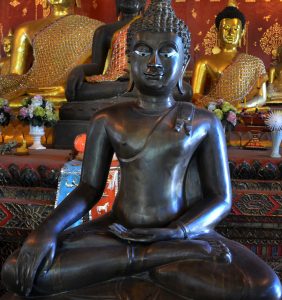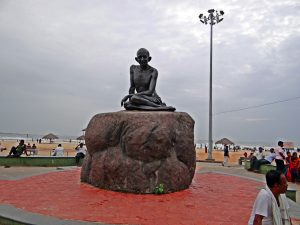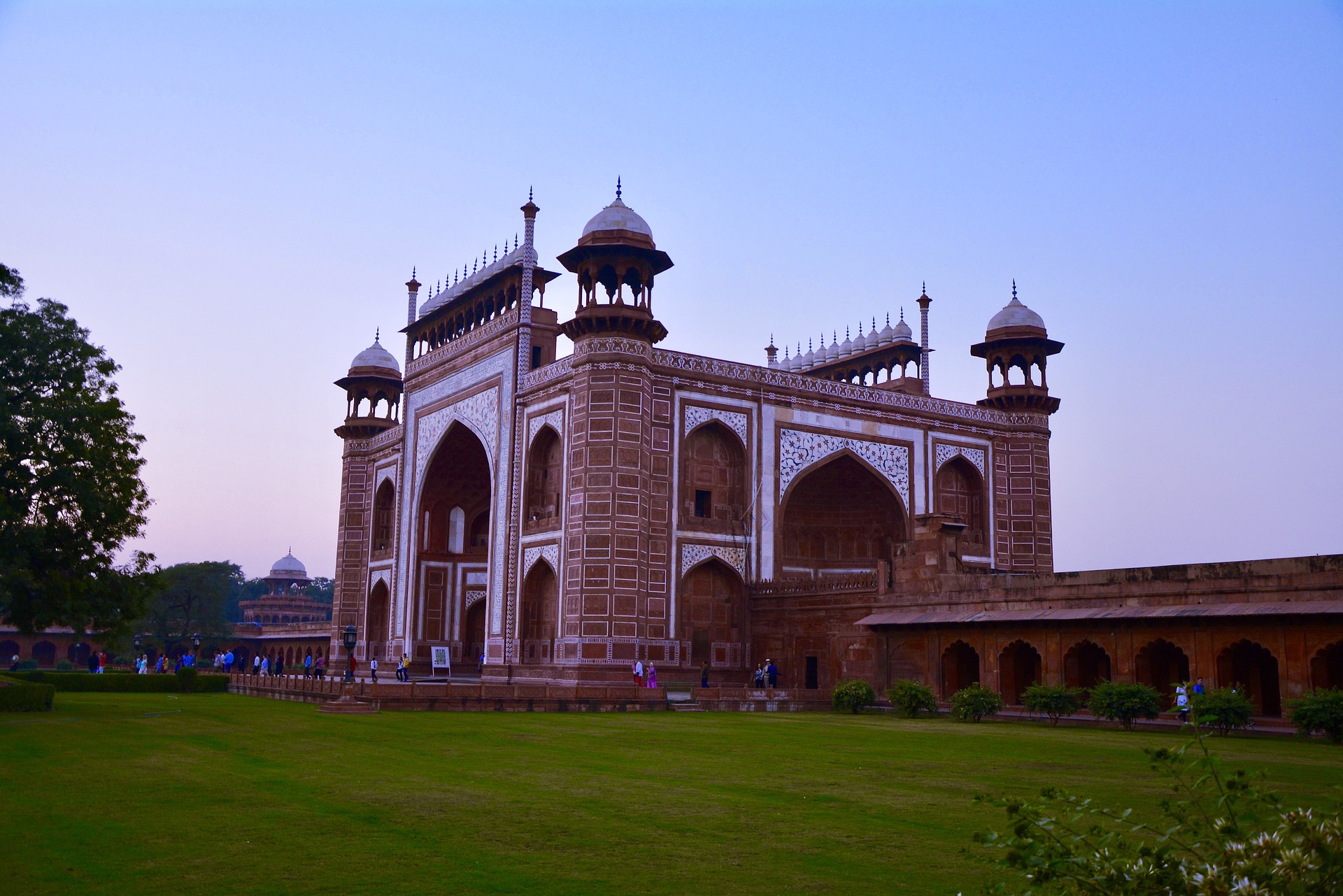What is India’s recent history?
India’s history began with the country’s creation since it occupies a land area of 2,973,193 square kilometers and a water area of 314,070 square kilometers on the Asian continent.
Short Story About India
With a total area of 3,287,263 square kilometers, it ranks as the seventh-largest country in the world. surrounded by China to the north, Pakistan to the northwest, Bhutan, Nepal, and Bangladesh to the northeast, and Sri Lanka on the south coast.
Ancient civilizations once flourished in India. The social, economic, and cultural structures that exist in India today are the results of extensive regional expansion. The Indus Valley Civilization’s emergence and the arrival of the Aryans mark the beginning of Indian history. Typically, the pre-Vedic and Vedic eras are used to describe these two periods. Hinduism emerged during the Vedic era.
Ashoka, a Buddhist convert, oversaw the unity of India in the fifth century, and it was during his rule that Buddhism expanded throughout much of Asia. Islam first arrived in India in the ninth century, and by the eleventh century it had become a powerful political force there. As a result, the Delhi Sultanate was established, which was eventually succeeded by the Mughal Empire, during which India once more attained a significant degree of political unification.
The 17th century saw the arrival of Europeans in India. The Mughal Empire collapsed at the same time, opening the path for the emergence of regional states. The English were declared the “winners” in the struggle for supremacy. Following the suppression of the 1857–1858 Rebellion, which aimed to reestablish Indian supremacy, and Victoria’s subsequent coronation as Empress of India, India had fully been incorporated into the empire. India’s fight for independence, which we finally won in 1947, came next.
The Indus Valley Culture and Civilization
There were a few civilizations that arose in the eastern world a long time ago. The availability of rivers, which supported a variety of human needs, was one of the primary factors in the development of these urban civilizations. The Indus Valley civilization, which included Northwest India and contemporary Pakistan, emerged alongside Mesopotamia and Egypt.
The Indus Valley civilization, the largest of the three, peaked approximately 2600 BC, when India’s agricultural industry began to thrive. Large-scale agriculture was made possible by the Indus valley’s fertile soil. Mohenjo Daro and Harappa are the two most well-known towns in the Indus Valley today. These two villages’ discovery provided archaeologists with glimpses into the depth of the Indus Valley civilization.
indicated by the ruins and objects, such as furniture, weaponry, jewelry made of gold and silver, and so on. The inhabitants of the Indus Valley civilization resided in carefully built buildings and communities made of baked bricks. Despite advancements and wealth, civilization sadly came to an end by 1300 BC, primarily as a result of natural disasters.

Civilization of Vedic [Short Story About India]
The Vedic civilization, which flourished near the river Saraswati—named after the Vedas, an early work of Hindu literature—was the following period in India’s history. The Ramayana and the Mahabharata were the two greatest epics of this era, and Hindus still hold them in the highest regard today.
The Era of Buddhist
Then followed the Buddhist era, which lasted during the seventh and sixth centuries BC, during the reign of the sixteen large empires known as the Mahajanapadas. At that time, the Sakyas of Kapilavastu and the Licchavis of Vaishali held prominent positions. Siddhartha Gautam, the birthname of Buddha, who founded the spiritualist religion of Buddhism, was born in Lumbini, not far from Kapilavastu. He passed away in 480 BC at the age of 80, but his teachings have since spread throughout southern and eastern Asia and are being practiced today all over the world.
Alexander The Great Invaded India
Invading India in 326 BC, Alexander crossed the Indus River and fought and vanquished the Indian kings. The Macedonians had never seen elephants before, therefore the Indians’ attempts at war were notable for their use of them. The kingdoms of the vanquished monarchs were thereafter seized by Alexander.
The Gupta Dynasty Era [Short Story About India]
The Golden Age of Indian history has been referred to as the Gupta era. When Chandragupt I married the daughter of the “Licchavis” ruler and received the gift of Pataliputra as dowry, he began to establish the groundwork for his empire, which stretched from the Ganges or Ganga to the city of Allahabad. Because of his clever conquests and the prosperous state of India, he ruled for 15 years and was also known as the “king of kings.”
The Name Harshavardhana
The last of India’s historic kingdoms was ruled by King Harshavardhana, who succeeded to the thrones of Thanneshwar and Kannauj after the death of his brother. Despite having some success in his conquests, the Chalukya Kingdom of Deccan India eventually overcame him. Harshavardhana was highly recognized for forging links with the Chinese as well as for his high levels of religious tolerance and prodigious administrative skills.
Medieval History of India [Short Story About India]
Islamic countries are credited for providing much of the character for India’s medieval history. The kingdoms and dynasties of medieval India spanned approximately three generations and included the following:
Chalukyas, Pallavas, Pandyas, Rashtrakutas, and Cholas.
At this time, in the ninth century AD, the Cholas were the most significant kings. They ruled over a sizable portion of South India, which included the Maldives and Sri Lanka. The empire came to an end in the 14th century AD with an invasion by a man by the name of Kafur Malik, notwithstanding the bravery with which the emperors exercised their power and the conquest of numerous areas in India. The Chola Dynasty structures are still standing and renowned for their charming rustic style.
The rise of Islamic kings came before the Mughals established their next significant empire. Prior to the birth of the Bhakti movement, the Timurid invasion of India was a pivotal moment in Indian history. Finally, the Mughal empire began to rise in the 16th century.
The Mughal empire, one of India’s biggest, was wealthy and illustrious, uniting all of India under a single king. Babar, Humayun, Sher Shah Suri (who was not a Mughal monarch), Akbar, Jehangir, Shah Jahan, and Aurangzeb were the Mughal kings. They were in charge of planning infrastructure, establishing an effective public administration, and advancing the arts. There are many monuments from the Mughal era still standing in India.
India began to fall apart after the passing of Aurangzeb, the final Mughal king. The Mughal monarchs, who influenced Islamic architecture in India, are still revered today.

The Story of Akbar, Jahan Shah and Shivaii Chhatrapati
Akbar
After Babur and Humayun, Emperor Akbar—also referred to as Akbar the Great or Jalaluddin Muhammad Akbar—ruled the Mughal Empire. Nasiruddin Humayun’s son, he succeeded his father as emperor in 1556 at the age of just 13 years old.
Jahan Shah
From 1628 to 1658, Shah Jahan, also known as Shahbuddin Mohammed Shah Jahan, was the Mughal emperor of the Indian subcontinent. He succeeded Babur, Humayun, Akbar, and Jahangir as the fifth Mughal emperor. After rebelling against his father, Jahangir, Shah Jahan took over the throne.
Shivaji Chhatrapati
The Maratha Empire in western India was founded by Chatrapati Shivaji Maharaj. He is regarded as one of history’s finest warriors. As part of the mythology, tales of his adventures are told. Guerrilla warfare was utilized by King Shivaji to seize a piece of the then-dominant Mughal empire.
India of Recent
European commerce firms engaged in fierce rivalry with one another in India in the late 16th and early 17th centuries. The English had outperformed everyone else and become India’s leading power by the latter half of the 18th Century. For about two centuries, the British ruled over India, bringing about revolutionary changes in the social, political, and economic landscape of the nation.
When the British came as traders in the early 1600s, colonization was at its height. The British aggressively employed the “divide-and-rule” approach to reign over India for centuries in response to the disintegration that existed in that country following the Mughal era. The Battle of Plassey gave the British their first taste of governmental dominance in 1757 A.D.
British Colonization
As they plundered cotton, spices, silk, and tea, among many other things, they are now viewed as plunderers of India’s richness of resources because they showed such a deep interest in what it had to offer. Even though they contributed significantly to India’s infrastructure by providing the Indians steam engines, the relationship is hardly viewed as being equal today.
The British Raj was polarizing, dividing Indians along religious lines, and mistreating the employees. Indians were forced to labor long hours for little pay because they were practically slaves under British authority. Naturally, this resulted in several mutinies, with well-known freedom fighters rising to the fore. Different schools of thought held that there were several paths to achieving freedom, but they all shared the same endpoint—freedom.
The British queen had said that the country’s goal was to aid India’s development, but a number of issues cropped up without their input. One significant example of this occurred when, despite India’s objections, Britain launched an attack on Germany on its behalf during the First World War. Additionally, millions of Indian soldiers served at the forefront of the British Indian Army during both world wars, further bolstering the Indian resistance. In both World Wars, almost a million Indian soldiers perished.
Conclusion
Short Story About India, This is a brief history about India, if you want to have a deep insight about the history of India i will recommend the book title The Story of India written by Micheal Woods.

